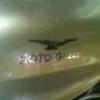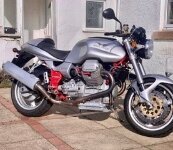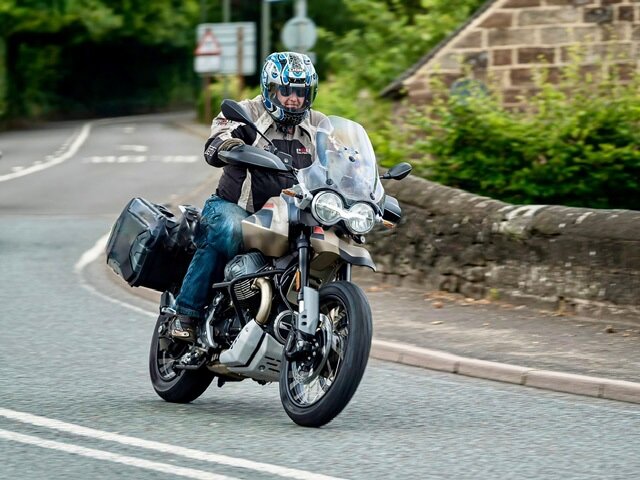Leaderboard
Popular Content
Showing content with the highest reputation on 09/02/2024 in all areas
-
It carries on. Colt, the MS's latest keeper, was on it at Guzzi lunch one day instead of his Grease O. He started the old girl up with the glorious sound from the Staintunes, and I said, "She's a bad MF er." He just smiled, and said, "I like it."4 points
-
I went deep into my notes and found SSR/One was July 9-11, 2004. Apparently, no photographic evidence has survived. (whew . . . There were four SpineFrames including @andy york's 2002 LeMans, a guy named "Jeff" on a LongFrame black Lemans, and someone my notes call "ballabio bill " . . . @Bill Hagan --> I left for SSR/One with 32,666 miles on mySport. Leaving for SSR XX with exactly 135,000 . . .4 points
-
A few items done today…and then a wonderful 100 mile ride. New oil sensor, new plugs (left one nice tan brown, right one a little dark but not sooty), new vent tubes off the tank just for fun, was going to replace the rubber tank stops but the ones there are in great shape. Been thinking about the slight 3k cough or hiccup …wonder if it could be mapped away with a better mixture on the map at that RPM…still running the older version of the Meinolf map…may try the new one. Besides that the bike runs great at all other RPM’s. A quick check with the Carbtune…TB nicely balanced at idle and 4k…time for a ride. Out riding…a song comes on…Riders on the Storm…found a Scura at the end of the rainbow! Time to buy a lottery ticket tonight!!4 points
-
I've mentioned before the ignition timing step on the std map at the low throttle angles of 4.2 and 5.1 degrees at the problematical rpm. Standard map is and 18degree ignition advance between 2200 and 2700 rpm at 4.2 degrees. Meinolfs map has cut this to around 7 degrees in the same general area although he's changed the rpm break points a little so a perfect comparison isn't available. He's also pulled some timing out at the same rpm range at 5.2 throttle angle as well so if this has reduced the issue then if it was me I'd pull a bit more out at the same ranges and see if that cures it. You can't get tuning right 100% on lambda readings alone, feel and lots of miles in varying riding conditions comes into it as well. My old engine would cough at times and then you couldn't make it if you tried. Maybe the issue is just a mechanical design issue at the end of the day if it can't be tuned out. The v11 engine may just have a small area of combustion instability under certain conditions due to the combustion chamber and piston crown design. Not sure, but if the Meinolf map has improved the issue noticeably I'd try pulling some more advance out of it at those rpm and throttle break points and see if it goes away. If not then put it back in again. Nothing to lose. Phil3 points
-
great video from Rick's. Watching 2:30, he see no increase in voltage, regardless of throttle. This is what I experience as we'll.3 points
-
We've had nothing but that for the full week... I want to give the Quota some luster, but I want not to ruin it, as I am patiently waiting to do a photoshoot with it. That makes me think there was a topic I wanted to bring up on the forum....3 points
-
3 points
-
Thank you to all in forum that have shared their expertise and guidance in this most excellent forum. With regret, downsizing and need to let her go....$3200 USD for Forum members. Current mileage 26,400 mi, hour north of Denver. Includes lift stand (handmade like the MG tool), old tank bag, Roper plate installed, gaskets, Caspar plug. Condition fair to good, current mileage 26,400, clutch replaced in 2021 at 18,300 mi (thanks MG Cycle for parts expertise). Please message with any questions!2 points
-
Not sure. My bike with the old engine did it with a new timing sensor, old sensor, new and older plugs and even with the timing chain replaced by gears which dispelled the theory it was timing chain slack/tensioner. Phil2 points
-
A MAP torch doesn't usually have a fine enough tip for heating the bridge screws and you need to use great care as you can easily melt the alloy bridge very thing section around the retaining screw. The yamaha seals a re also very cheap and what I used. The p/n is in the thread I'm sure. Phil2 points
-
It’s very minor now and much better than before…it seems to now occur around 2750 rpm’s…but much less than before. Will keep riding it more and see how it behaves long term. Given that it’s such a momentary issue …it’s a minor issue overall…but you know we like to search for perfection!2 points
-
Hi! Did the cough/hiccup present at 3K RPM get fixed? Regards!2 points
-
Well I loaded the new Meinolf map this morning and set CO trim to 10 and it is remarkably better than the older Meinolf map and Co trim at zero. Maybe there’s something slightly worn out on my bike but it doesn’t seem to like CO trim at zero, the bike feels too lean and seems to starve at higher Rpm’s. Will run this combo for a while and see and evaluate for longer term results.2 points
-
Keep in mind that video appears to show testing of a 3 phase generator. The V11 has a single phase generator. The advice is good, but you're only testing output from 2 yellow wires.2 points
-
@Kevin_T I have not, maybe about the only thing I haven't. I'll remove it and give it a good look. As it seems to be producing increased amperage with increased throttle, I expected it was good. Thank you for the suggestion. I still don't know why the 30 amp fuse (now breaker) heats up and melts. This must have something to do with the stator not charger the battery. @Pressureangle my riding has been 50 mile roundtrip freeway rides to and from work, 80mph+.2 points
-
2 points
-
In my experience a stock V11 will make about 75/6 RWHP if tuned correctly. The hairiest one I ever rode was the Mighty Scura I sold to Chuck. That probably didn’t make a lot more top end but bugger me drunk it was a torque monster! Bottom end and midrange was just phenomenal. Far better than any 2V Guzzi had any right to be.2 points
-
For the last 8 years my two HS buds from NY and I have made plans to hike at least two National Parks somewhere around the country during your SR weekends...usually 7-10 days. This year it is Rainier and Olympic. Next year our dates have changed. The SR is on my bucket list, and with no conflicts next year. I have a year to figure it out.2 points
-
I am just going on record here that a SpineRaider that shows up in his truck (with tools ), but no SpineFrame , is still a SpineRaider . . .2 points
-
Sorry to hear that. I appreciate that sometimes there is a point of diminishing returns... you, too, will be missed.2 points
-
Ciao. Unfortunately, my schedule NEVER permits me to make the ride for SSR (2 weeks into school), so instead of preparing for the ride, I have to content myself with deferred cleaning of the Tenni (Bubbles remains neglected in that regard). Anywho, as I was wiping off the bug splatter and working rearward today, I realized that the rear brake switch boot is shot. Reviewing the spare parts catalog, it looks like that boot is part of the "main cable kit". Anybody have a part number for the boot individually, or an alternative part that works? Cheers, Frey1 point
-
The original ignition advance mapping is far from "smooth" at those rpm with low throttle openings. Anatomy of a "hiccup" . . .1 point
-
I don't have an image docc and the new throttle bodies on the Daytona engine don't suffer the issue. I considered bending the bracket as well but in the end I used some .028 lockwire in one wrap around the cable end Ferrell and wired back to the inboard side of the bracket. It served to pull the cable ferrell flange hard against the bracket face and keep it aligned. It also helped a tiny bit with throttle cable play as previously the ferrell flange would kick away at an angle to the bracket at zero throttle and then get pulled into alignment as you opened the throttle. If you look at yours when you open the throttle the ferrell probably gets pulled straight when you load the cable and all the wear occurs when the throttle is closed at idle or on the overrun. Thats the way it was with mine anyway. Phil1 point
-
Yes Phil, I googled your YAM part numbers and that's how I sourced the slightly cheaper Suzuki equivalents. I was surprised my blowtorch was able to heat the TB body (I focused the tip of the blue flame section on the TB casting where the screws thread in, rather than the bridge, and only did the left hand TB as per your advice, as the bridge is thicker on that side. I'll only attempt the right hand bridge screws IF I have to replace that TB. Thanks for your comments1 point
-
Correction - I meant "source a RIGHT hand side TB" in the post above! Here's one of the inlet valves on an engine that's only (allegedly) done 20-something thousand miles? Hmmm. Comments from more knowledgeable people welcome (i.e. pretty much everyone on this forum!) Also gawping at the inlet port which looked pretty crude (okay, some of my brit bikes have been ported by people who know what they're doing, not me) led me to read up on the "redesigned" ports this motor got compared to the previous Tonti motors. Hmm, not clever having a port that stops flowing well below max cam lift??1 point
-
Well I haven't had a lot of time in the last few weeks, what with school holidays and a BSA 250 with bodged electrics (my brother's) to sort. However I HAVE managed to remove the throttle bodies! Actually it was a (bit) easier than i was expecting. I was going to order a MAPP torch to heat the TBs to melt the red loctite, but managed to get the left hand one up to around 220C with my ordinary butane/propane mix blowtorch (as measured with an IR thermometer) and the very small bottom allen screws on the alloy tie bar came out good as gold, if a little nerve wracking as you slowly increase the torque! I used a dremel with cutting wheel to carefully dress off the peening on the butterfly screws, marked the orientation of the butterflys for reassembly and took both assemblies apart (with lots of photos) following Lucky Phil's excellent guide in the "How tos" section. The left hand one looks ok, and I THINK the right hand one (with all the corrosion in the venturi and initially seized butterfly) might clean up ok? However, this is what greeted me when I took the TPS off the spindle on top of the right hand TB - see pic. The circlip and washer that sits above the spindle seal have both pretty much disintegrated! As with much of what I've uncovered on this bike, much of it is in fine fettle (on the surface at least) but then you come across something horrible? I am going to dummy fit the spindle, which is badly corroded at the top back in the TB and see if the area the seal sits on is ok or toast. If ok, then I use a local bike shop to vapour blast stuff and ultrasonic it all afterwards, they've done cylinder heads (Guzzi T3) and crankcases (BSA Rocket 3) for me with no issues with lodged blast media. I've found a UK source for the seals, actually slightly cheaper as a Suzuki GS450 part (generic mikuni carb butterfly seals as per Phil's write up) over here - Suzuki part No. 13651-51011. If these work ok I'll add the details in that write up. The bushes also have some play but I've yet to remove those as I don't have a correct sized tap yet. My gut feel tells me however that I'm going to have to source a LHS TB, we'll see? The seals and bushes aren't expensive so nothing to lose. Hoping to make some progress this week but we'll see as loads of house jobs have been piling up! The other nasty I uncovered is, peering into the inlet ports (I've removed the inlet manifolds) the inlet valves look horrible, with loads of deposits on the back of the valve heads on both sides? I expected with a lean running "modern" engine they'd look white(??), no such luck, is this typical?? see next pic, hard to photograph, I've tried to illuminate a bit better with a torch. both inlets look the same so nothing to do with corrosion. I'll post a pic on the next post.1 point
-
1 point
-
The throttle sleeve angle is an old issue docc. I have lockwire around the sleeve and tied to the bracket to pull the outer sheath into alignment with the bracket so the cable has a straight shot at the cam. Sounds like you have got the other damage sorted though. No need for a new cable. Even flight control cables are allowed some broken wires. Phil1 point
-
Hello Meinolf... Reading your description above, I'm cautiously optimistic to try and upgrade from your old map. All other settings are still spot on as per your prior instructions. Do you believe this new map could help eliminate the minor cough/hiccup present at 3K RPM's today? Will install it tomorrow and give it a go...Thanks!1 point
-
Let's review some basic theory, and in the context of how we ride. Heat is created by current (amps). Amps is a function of Voltage over Resistance. Sometimes it's not intuitive, that a *reduction* of voltage actually increases current, when resistance is very low and demand is high. For instance; You came home from a nice ride, but spent 20 minutes idling in traffic and residential streets (low charge output) You always ride with high beam on (additional demand) Next morning you let bike warm up before riding the same 20 slow minutes to your favorite rev zone You do this 3 weekends in a row. Euro bikes all have 'city lights' and it seems they're intended to be run as usual, with headlamps only at night. I'm guessing here, Euro posters please give some clarity. So it also seems that Euro electrical engineers produce marginal systems to operate at max capacity constantly. So if you create a low battery/high charge situation, (high demand) with short-trip low speed rides, and high headlamp demand, low rpm output voltage, you maximize the amperage current through the system. Consider that even if every connection is perfect, the system itself may not be up to the task, robust enough, to tolerate that as a permanent condition. I reviewed the electrical schematic, fuse sizes, and expected demand. It's very close. Assuming a 400 watt alternator, that calculates to 28.5 amps at 14 volts.| Drop the voltage one volt to 13, and the amperage goes up to 31.7. Now we see where we may be in trouble. So the moral here is, as I discovered on my own bike, that the higher the charging voltage the lower the amperage. Maximize your connections and also your riding habits, or use a battery tender to recover between rides.1 point
-
Before you call in the dogs , you should use a analog ohm meter and check EVERY wire for continuity and every connection. When you rule out everything you can rule out everything. also , a new part is not always a good part. Also , make sure EVERY ring terminal is accounted for on the positive and negative side of the battery.1 point
-
1 point
-
A lot of people have left off one or more of the ring terminals when playing around with the battery . Don't overlook this area .1 point
-
1 point


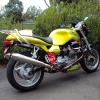
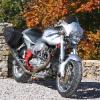

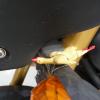
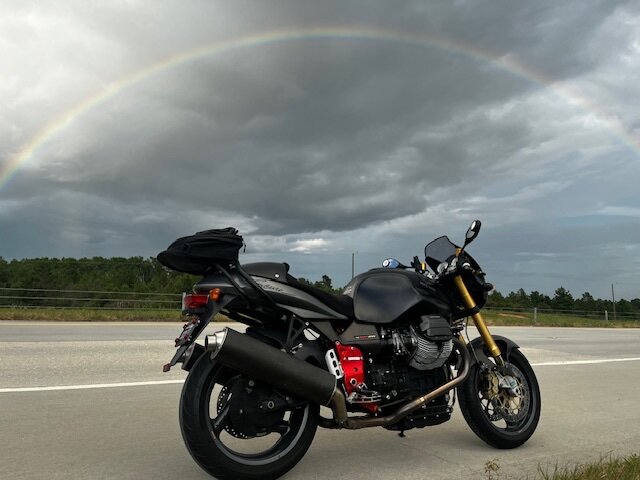







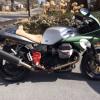
.thumb.jpeg.58dab9859cf5ff4c8f748fd3053708df.jpeg)


